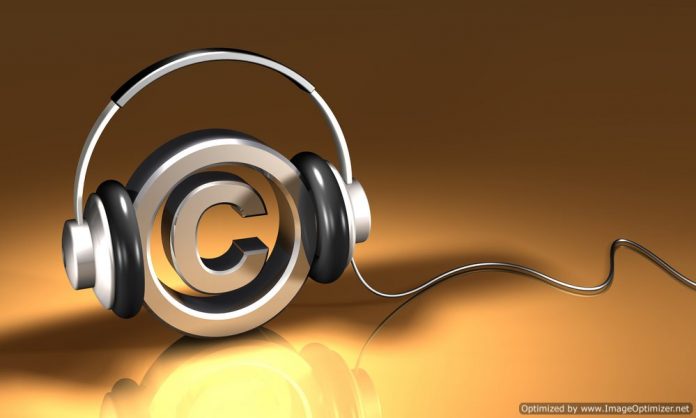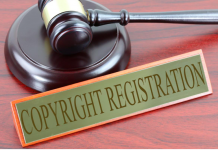This article is written by Shreya Malhotra, from Symbiosis Law School, Hyderabad. The article briefly deals with the procedure to obtain a statutory licence for the cover versions of songs and the need to redraft the provision.
Table of Contents
Introduction
The prologue to the statutory licencing provision under Section 31C of the Copyright Act, 1957 deals with licencing of cover versions of songs. The cover version is a recording of a melody by a vocalist, instrumentalist, or by a group other than the original singer or writer. Cover versions are mostly the contemporary renditions of familiar tunes. The singers sing these songs a few times as a tribute to their preferred artists in their own way and giving it their own touch.
The standard of making cover versions without express assent is an acknowledged practice in different parts of the world. The Indian Copyright Act, 1957 that has been altered multiple times earlier in 1983, 1984, 1992, 1994 and 1999, and was recently amended in 2012. The alteration of 2012 realized numerous significant changes including explaining the copyright issues relating to cover versions.
The main aim behind the introduction of the Copyright (Amendment) Act, 2012 was to protect the wrongfully exploited interest of the owners of underlying works in sound recordings by perceiving their free rights and guaranteeing that they hold their right to receive royalties particularly during the commercial misuse of such work. Notwithstanding, the Act and the Rules drafted in, have raised a few troubling issues that challenge the very appropriateness of the provision regarding statutory licencing. It neglects to explain whether assent is required for creating a cover version under Section 31C, issues related to royalty, etc.
What is a Cover Version
A cover version is a freshly performed rendition of a song that is already in existence, or has been previously recorded or has been commercially released by someone other than the original artist. This new recording is called a cover version. An example could be of the song “Stand by Me” which was originally sung by the iconic singer Ben E. King was covered by several famous artists such as John Lennon, Tracy Chapman, Otis Redding etc.
In the case of Star India Pvt. Ltd. vs Piyush Agarwal & Ors, para 15, it was observed that, “….. if a mixture of the three works is conducted which are the lyrics, music and works of the artist together, and a sound recording is made, that sound recording which is the first sound recording……Once the first sound recording is completed, then, if and after permits are obtained from the writers of the musical work and the lyric creator who served the basis of the first sound recording, another band of orchestra with the singer (that is another group of performers) may cause a new sound recording to be produced by their performances based on the current musical work and lyrics. This second and subsequent sound recording is considered a version recording or a cover version.” Subsequently, this decision was set aside in an appeal, though not impacting these findings.
The cover version has been also defined under Section 31 C of the Indian Copyright Act as, a sound recording in regard of any abstract, sensational or melodic work, where the sound recordings of that work have been made by or with the permission or assent of the owner of the right in the work. With the headway of advanced technologies, it has gotten simple for individuals to make and publish cover versions online. Generally, the beginner makers make recordings of cover versions to gain acknowledgement however a greater part of these recordings are posted without the assent of the original writer of the work, which may put these young talents in copyright encroachment suits.
What is Version Recording
There is nothing of the sort as a version recording under the Indian Copyright Act, as it stands currently. The term version recording was conversationally utilized by the music industry to allude to song covers or cover versions under the old Copyright Act before it was altered in 2012 and Section 31 C was added.
Version recordings were actually what the Cover Versions are comprehended to be currently. They allude to a fresh rendition of a song that is sung again with a fresh set of performers. Before Section 31C was presented, the song covers were used to be made under Section 52(1)(j) of the Copyright Act, which was a provision of “fair dealing” that gave the defendants a defence that the cover version made by them was fair and non-encroaching as it agreed to the pre-conditions set out under Section 52(1)(j).
These recordings were called “version recordings” inside the industry and the expression was gotten on by the Delhi High Court in a few orders in cases filed by T-Series and Saregama. Apart from the casual use, the word “version recording” has not been found under the new Act. The section has been erased now and has been re-introduced as a provision of Statutory Licence under Section 31C with certain changes, however, the embodiment of Section 52(1)(j) has been held to a great extent.
What is a Statutory licence
Section 31 of The Copyright Act, 1957 mainly deals with the statutory licence and compulsory licence. Statutory licences do not require any examination into the conduct of the proprietor. It endeavours a wholesale expropriation of proprietor self-governance, once the work fits inside the more extensive class of works that can be so licenced. Section 31C of the Copyright Act, 1957 deals with the statutory licencing to make cover versions and Section 31D deals with the statutory licencing broadcasting of literary and musical works and sound recording. The first has existed, however as a feature of the fair dealing exceptions under Section 52, from the earliest starting point. The second is a fresh addition to the Act vide the 2012 amendment. This article will mainly deal with the Statutory licencing for Cover versions.
Is ‘Consent’ necessary under Section 31C of the Copyright Act
Since the time it turned out to be evident that there existed a productive market for cover versions, various makers for version recording developed as the statutorily recommended order under past Section 52(1)(j) needed them to send just notice and pay the decided royalty to the writers of original works when a sound recording of a same original work had just been allowed to be in open space.
However, there were a series of suits under Section 52(1)(j) from where Section 31C has been replaced, challenging whether the section requires seeking an express assent or simply a notice to be sent to the creator of basic works.
While in the case of Gramophone Company of India Ltd. v. Super Cassette Industries Ltd. the Hon’ble Court mandated assent, the Karnataka High Court choice of Gramophone Co. of India Ltd. v. Mars Recording Pvt. Ltd. and Ors., properly concluded that what the section thinks about is just accommodation of the notice and the assent need not be acquired. This was put aside by the Supreme Court of India in the case of Gramophone Co. of India Ltd. v. Mars Recording Pvt. Ltd. and Anr., yet on the absence of factual foundation and not by varying based on what was held by the High Court.
In the case of Super Cassette Industries Ltd. v. Bathla Cassette Industries Pvt. Ltd., the basis was somewhat rough wherein it was expressed that a change in the artist in a vocal recording is a change in the most essential constituent of the recorded song and it is impossible without the past assent of the proprietor of the original recording. Nonetheless, the decision has been held to be per incuriam in the case of Gramophone Company Of India Ltd. v. Super Cassette Industries Ltd., which explained that for getting a statutory licence, the assent of the proprietor need not be acquired.
The all-around acknowledged method of rationale deciding in such a line was, that if the copyright proprietor once allowed the mechanical reproduction of his melody, from that point, any other person could make mechanical reproductions of that song on payment of a statutorily endorsed royalty for each unit sold.
As a matter of fact, assent, whenever ordered, would make the very idea behind statutory licencing worthless and would draw in Section 30 which accommodates voluntary licences.
Further, applying the tenet of ‘expressio unius est exclusio alterius’, since notice is explicitly referenced and assent is avoided, it might be securely reasoned that assent isn’t required under section 31C. In any case, this has stayed a disrupted proposition and the entire commotion around it could have been perpetually settled if the governing body had expressly stated its intention either under Section 31C or in the principles.
Procedure to obtain statutory Licence for Cover Versions of songs
As per the Copyright Rules, 2013, Chapter 7 Rule 23- 28 provides with the procedure which needs to be followed to get the statutory licence for Cover versions.
Notice to be provided for making Cover Version
Clause 1 Rule 23 of the Copyright Rules, 2013 says that whosoever wanting to make a cover version of a song in regard of any artistic or musical work under sub-section (1) of section 31C has to provide a notice showing his intention to the owner as well as the Registrar of copyrights 15 days prior in any case. The person shall also pay the amount of royalties a minimum of fifty thousand copies, to the owner. If the number of copies is more, then the rate will be determined by the Board according to the Rule 27 and provide copies of all covers and labels with which the cover version is to be sold.
Clause 2 Rule 23 provides information that a notice needs to contain such as, the points of interest of the work, modifications, the name, address and nationality of the owner, points of interest of the sound recording made already, number of copies and the scheduled year, medium in which the sound recording was last made, price of the cover version and the information of the prior payment of royalty.
Conditions to meet when you create a cover version
Rule 24 of the Copyright Rules, 2013 provides with the factors to be met while making a cover version which are as follows:
- While creating a cover version of a song the maker shall keep up the honesty of the original literary, dramatic or melodic works, but to the degree, as might be in fact essential to make the cover version.
- The cover version shall not be given in any type of bundling or with any cover or mark including any label or carton or decorate card or site having design or shading plan or format or getup like that of the original record which is probably going to misdirect or confound the general population in identifying the original recording.
- The cover version will not utilize the name of the original recording and will state in striking letters on the cover that it is a cover version made under section 31C.
- The cover version will noticeably show the names of artists and will not contain the name or portray in any capacity any artist of a previous sound recording of the same work or any cinematograph film in which such sound recording was fused.
Notice for making extra copies and keeping of records
As per Rule 25, an individual, who, after giving notice, is willing to make extra copies during the time period for which he provided notice for making cover version or if he wishes to carry on with the creation of cover version shall provide a new prior notice under Rule 23 and conform to all the conditions mentioned under Rule 27. The Rules also provide for maintaining a separate book of record under Rule 26, which will carry the information regarding number of copies made, sold and left. Such books and records will be kept at a particular place and shall be available for review to the owner of rights or his agent with an advance permission of the person creating such version.
Way to determine Royalties
Under Rule 27, the board once setup shall immediately either suo moto or give a public notice to fix royalties and may also welcome suggestions for deciding the same. That notice will be issued by the Board in the Official Gazette (as per Draft Copyright Amendment Rules, 2019 it is not required to publish in Official Gazette) and re-published in two everyday newspapers and shall post this on the site of the Copyright Office as well as the Board. Under a time period of 2 months from the last date of the receipt for the proposals, the board shall decide the royalties payable to the proprietor of the copyright. The Board while deciding the royalty will consider certain factors such as, the retail cost of the previous sound recording; the overall standards of royalties; the nature and class of the work, language, configuration and medium in which it is to be sold; and such other issues as may be viewed as important by the Board. The Board may reconsider the paces of royalties periodically, taking into account the provisions of this rule.
Objection regarding the failure of payment of Royalties
Rule 28 of the Copyright Rules, 2013 provides that the owner of the copyright may file an objection to the Board if there is respect of the failure of the payment of royalties in full, as decided by the Board. If the Board is convinced at first instance regarding the validity of the grievance then it may pass an interim order directing the individual creating the cover version to prevent from creating further copies. The Board subsequent to holding such enquiry and giving a chance of being heard to the owner of rights shall make such further order as well as an order for payment of royalty as it deems fit.
Whether there is an adequate balance of interest maintained under Section 31C
It is for sure a very challenging endeavour by the lawmakers to adjust the interest of the version recorder and the proprietors of the underlying works including the rights of the original sound recorder through the enactment of the 2012 amendments and the standards therein. Although, it is quite dicey whether the endeavour would gain any achievement.
Express denial of a deceptive cover or label prone to confuse people in general with respect to their identity is a certain protection to the privileges of the original sound recorder. This is upheld by the creation of copies of covers and labels, the motivation behind which has been explained to help the proprietor of the original works to express their complaint before a competent court if there is any occurrence of deceiving covers.
Notwithstanding, by no stretch of thoughts can it be interpreted to imply that the proprietor of the original work can fit to himself the right to determine with respect to whether there is a deceptive cover, in which case the party would be a judge in his own cause, which would be in infringement to standards of natural justice. If properly comprehended and rehearsed, through this not exclusively are the interests of the original sound recorder and version recorder balanced, yet in addition the interest of the overall population from being deceived by the version recordings.
Further, the method of reasoning behind the 15-day time limit is that there is adequate time for the proprietor of the original sound recording to affirm that the first recording to which he has granted the consent is a legitimate one with the goal that an ensuing cover version additionally achieves the validity.
The Act and the Rules additionally command the maintenance of books of record. Such Books are available to inspection by the proprietor or an agent of the proprietor of the right, and this would guarantee answerability and straightforwardness.
Likewise, the non-payment of such amount of royalty determined under the relevant provisions could bring about the Copyright Board, subject as per the general inclination of the validity of the grievance, passing of an ex parte cease order or order for payment of royalty. In this way, it would likewise guarantee objective scrutiny by the Copyright Board over the issue also. These are all apparent endeavours balancing the rights of different partners, yet the section isn’t completely unambiguous.
While Section 31C of the Copyright Act is quiet about the measure of royalty that is to be paid, the Rules have determined that the individual covetous of making the sound recording should pay a royalty due for 50000 copies to the proprietor of the copyright. For each extra copy made to the 50000, a fresh advance shall lie according to Rule 23. In spite of the fact that very little discussion has emerged in this specific context, it may be felt that the standard stands quite in opposition to the aim behind the enactment of Section 31C.
The royalty of 50000 copies may be a little on the higher side for the rising small-scale sound recording businesses. The Proviso to the draft Rule 23, read with Section 31C (4), is the main comfort, which allows the applicant to pay just the lower least fixed by the Copyright Board in regard to works in a specific language or vernacular. In any case, one would look into this angle in a skeptical way as the caution that follows subjects this to the possible flow of such works.
It is correct, that without a time gap being allowed, there are all prospects of version recordings expending the market. However, even all things considered expansion of the period from 2 to 5 years loiters a question whether aside from the film industry hits some other version recording would have the option to receive any rewards following 5 years. It is likewise muddled with respect to why version recording ought to be in the same medium as that of the original. These oddities should be additionally reacted to at the earliest so as to guarantee equality in the appropriation of rights.
Deficiencies of The Statutory Licencing In India
Under the Copyright Amendment Act, 2012 two explicit sections 31C and 31D have been included which draws in a ton of consideration because of certain weaknesses under the law. These two sections have been explicitly added to investigate the matter of licencing. In any case, rather than taking care of the current issue, the new correction causes a commotion of many. There are still certain risky areas which have not been addressed yet, a few of them are as follows-
- To decide upon the rates of royalty the authority has been given to the organization board, but it has not been stated yet on what standards it will be decided about the royalties for statutory licencing. This will obviously lessen the costly and protracted discussion, arrangement, or negotiation with the copyright society or the proprietor of the rights. Yet, still assuming from a reasonable point of thought there ought to be some criteria that need to be looked over while deciding the royalties for statutory licencing. Will it be according to the nature of the work, according to the distinctive regional basis or proposal from the stakeholders will be welcome to choose the same.
- While discussing the cover version, it has probably become more difficult now to obtain, as now after the alteration in the time span after which one can produce a cover version has been stretched out from 2 to 5 years. Additionally, the limitation over the medium, ought to be equivalent to its initially created. However, rather than all the limitations referenced in the alteration, the applicability of the provisions are as yet being referred to. The ongoing model is the song “Kolaveri Di”, which is recorded in several cover versions without the legal authorization and still being used. So just the creation of laws is insufficient, a similar need to be in use also.
- The Department Related Parliamentary Standing Committee, watch the ground reality and the weaknesses of the laws uniquely identified with the convenience and practicability of the advance payment of royalties, the practicability of taking the names of the performers and Rights of the proprietors and the principle performers has been denied in a manner by not giving them the exclusive right which they should entitle. The right to equality as mentioned under Article 14 of the Constitution of India, Article 19(1) (g), Article 21, and Article 300A has been denied to the proprietors. This specific angle has been referenced in the writ petition which has been documented by the Super Cassette or T-arrangement and Venus Entertainment expressing that these provisions are outlandish and infringing upon fundamental right to trade and carry out business.
- Recognizably, it gives the power of excessive delegation to the board of copyright by letting them decide the royalty of the work which is by all accounts unregulated discretionary power and furthermore against natural justice.
Conclusion
The Amendment of 2012 and the Rules have definitely made noticeable changes regarding licencing as well as the rights of directors, performers, artists etc. Even the arrival of cover versions has positively challenged the already existing framework of copyright law. However, it should be remembered that the main aim of intellectual property protection is to aid the flow of innovation and creativity and certain strict laws make it difficult for individuals who wish to showcase their talent.
Even the recent Draft Rules are a bit unclear regarding the medium calculating the royalty under Sections 31C and 31D. There is a serious need to make the laws clearer and straighter because, in this digital environment, IP laws are so strong and profoundly established that any act comes under the category of a crime. Hence, it gets incomprehensible for the upcoming younger talents to create something by showcasing their talent without doing something which is illicit. A reasonable methodology weighing equally the requirements of copyright holders and the overall population would fill the need best.
References
LawSikho has created a telegram group for exchanging legal knowledge, referrals and various opportunities. You can click on this link and join:
 Serato DJ Crack 2025Serato DJ PRO Crack
Serato DJ Crack 2025Serato DJ PRO Crack











 Allow notifications
Allow notifications



